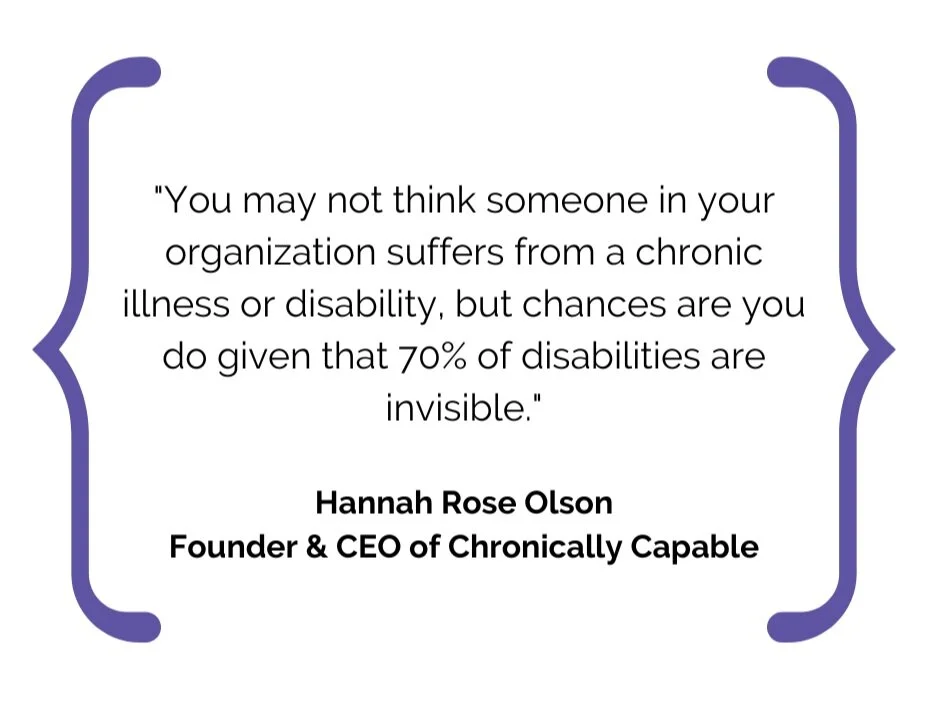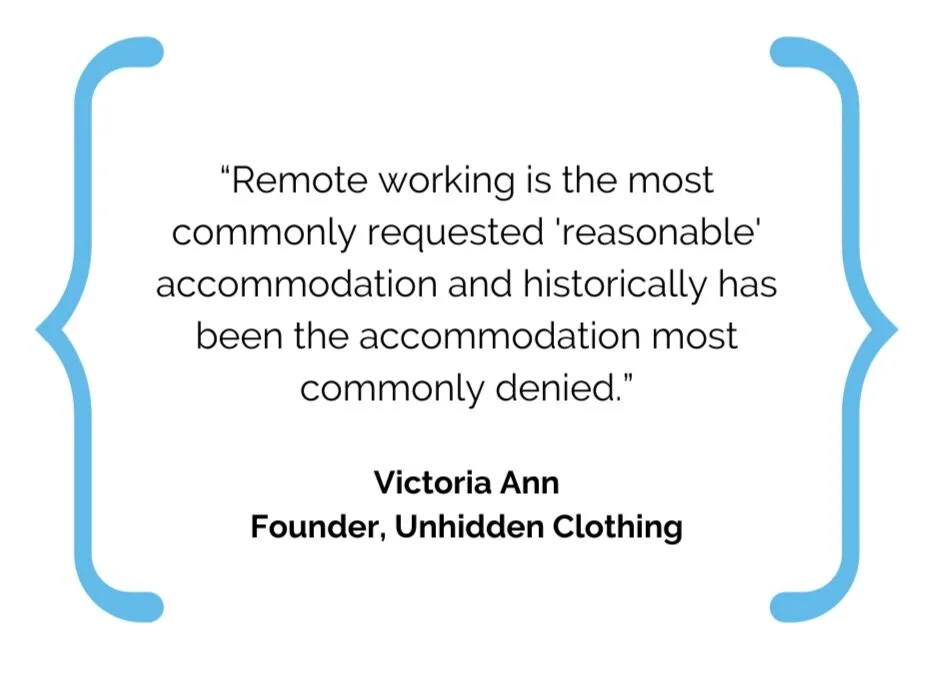What is Accessibility and Why Does it Fall Behind? (Part 2)
Woman in a wheelchair sitting at her desk and working on her laptop.
DEI efforts in the workplace will never be sustainable without folding in the concepts of belonging and accessibility. I started saying DEIBA™ (I pronounce it “dee-buh”) in training sessions, talks, and workshops more than two years ago when I recognized that diversity, equity, and inclusion (DEI) wasn’t enough. Since then, I’ve spent my full-time and side-hustle engaging with the fear, confusion, and pushback that so often meets our DEI efforts. Employers may discount it, believe that they’ve done enough, or simply talk the talk without meaningful action. For many individuals, DEI is a fraught term reserved for the overly-sensitive or virtue-signalers. There is no silver bullet for activating allies in the mission but I believe that bringing belonging and accessibility to the forefront is our next crucial step.
I have seen interest in DEI explode recently, largely in response to social justice movements like Black Lives Matter, LGBTQIA, and #MeToo. High profile examples of police violence and sexual assault have pointed a spotlight on America’s power structures, and in my sphere, reemphasized the diversity problems in our corporate cultures. While this increased interest is undoubtedly good, we have not seen an equal push for accessibility and equity for people with disabilities (PWD).
What Does Accessibility Mean? How We Fail to Meet the Requirements.
I believe it’s past time that we bring accessibility to the forefront of our DEI efforts. Accessibility means providing tools, support, and training which enable PWD to succeed at the highest levels in the workplace. We know that 26% of American adults live with a disability. In 2020, only 17.9% of Americans with disabilities were employed compared to 61.8% of Americans without disabilities. People with disabilities are disproportionately employed in industries (such as retail, food service, or hospitality) that were hit hard by the pandemic. It seems self-evident that PWD do not have equal access to opportunities and resources, so why is accessibility not a larger part of DEI efforts?
Fear: stigmas limit accessibility for people with disabilities
One core reason is fear. Long-ingrained stigmas say that disability is strange, scary, or somehow contagious. Institutions, whether they are political, social, or educational, struggle to explore disability in a humanizing way, much less engage with PWD equitably. Education is just one part of the solution however. For many people, grappling with the challenges of disability causes them anxiety, regardless of whether that anxiety is rooted in a lack of understanding, or if it comes from the fear that they are not doing enough.
Even well-meaning individuals may be afraid to discuss the realities facing PWD even in a diverse workplace. They’re afraid of embarrassing themselves or their peers when discussing disability. They may fear doing the wrong thing and they absolutely fear discussing anyone’s disability directly. They understand that to refer to Alice’s amputation or Bob’s depression is horribly invasive but they have no experience or training in how or when to discuss these things otherwise. Uncertainty, ignorance, and fear mean that most people find it easier not to engage at all.
Complacency: not meeting employee needs with DEI efforts
Another core reason is complacency. People see automatic doors, disability disclosure on job applications, and ADA compliance rules, and are tempted to believe that these problems are solved. The government is on it! It’s illegal to discriminate against someone with a disability, after all! If that sounds naive to you, you are not alone. Government mandated accommodations often cover the bare minimums and are largely focused on the most visible or evident disabilities. The stigma surrounding these topics also means that individuals without disabilities don’t know if their coworkers are getting their needs met, while PWD may be afraid to ask for accommodations (or even disclose!).
Recognition: failing to acknowledge PWD employees
Lastly, we simply fail to recognize the majority of people with disabilities in the workplace. 123 million working age Americans live with a chronic illness and most of these illnesses are not visible from the outside. When most people think about disability accommodation, they think about ramps, elevators, bathroom stalls, or automatic doors. In rare cases, they may think about accommodations for coworkers with visual or auditory impairment. The common perception of accessibility does not include invisible disabilities.
Imagine if your coworker required a wheelchair. The accommodations for this person seem obvious, don’t they? With an open conversation, you could find out what they need. Now imagine if your coworker had Crohn’s disease, or depression. What accommodations should their organization be responsible for? Would that person even feel safe disclosing their disability? You may not know these answers to these questions and that is not surprising. We won’t know the answers if we don’t discuss accessibility honestly.
Finding a way forward
The solutions are difficult, not easy, and it is complex, not simple. Complex, difficult solutions are feared by everyone and the truth is that there is no catch-all method for HR departments to implement. However, it is time to address the importance of disability awareness and accessibility for PWD. The discussion around disability varies wildly from person to person. For every person that is comfortable discussing their disability, there will be many more who have recognized, accurately, that society treats them differently. They may be simultaneously desperate for much-needed accommodations and exhausted by the attention and daily struggles they get from their disability.
Accessibility must become a cornerstone of our national discussion on DEI, and to start, we must face the unpleasant fact that we have not done nearly enough to accommodate PWD.
Edited by Chris Falkowski





